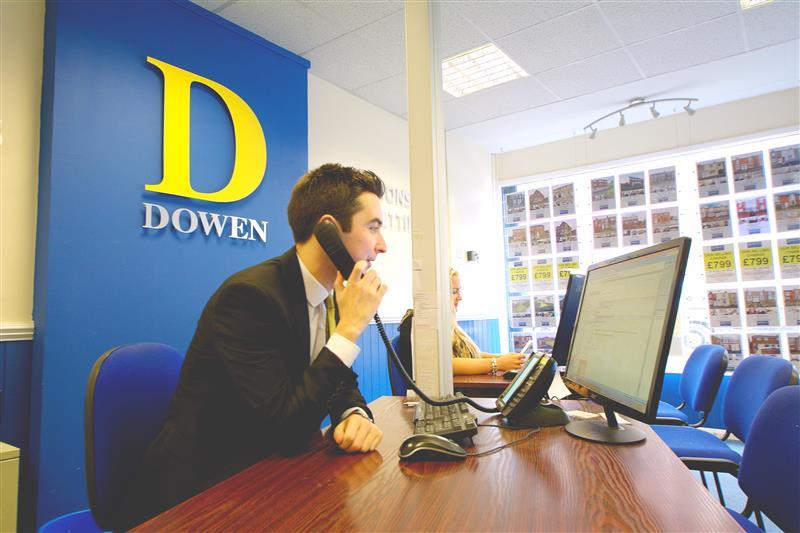Advice For Buy-To-Let Investors
Whilst buy-to-let investors have come under the crunch from a tax change, many people still see it as an attractive way to invest. Buy-to-let still works if it’s done right and following our tips can help to make your investment pay off.
As an income investment, it’s important to have a big deposit as it helps to make buy-to-let a much more attractive proposition. The last few years the property market has continued to grow and house prices are on the rise; meaning property is still an attractive investment.
Mortgage rates are at a low, however these rates can rise, and your property needs to stand the test of time. Even with tax changes and the chance of rising interest rates, demand from tenants for quality properties is ever growing. With higher demand, the rental valuations are likely to become much more attractive. If you’re planning on investing in a rental property, then our top 10 tips of the essential guide to letting will help you to make a much more successful buy-to-let investment.

Top 10 Tips for Buy-To-Let
1. Market Research
Buy-to-let can be a confusing market; especially if you’re new to it. It’s important to consider all of the risks and benefits to make sure buy-to-let is the best option for you. If you put money into a savings account then it’s going to sit there and gather a small amount of interest.
Whereas with a rental property, you can do it up and rent it for a healthy yield; when bought at the right price. When house prices rise you could be sitting on a gold mine. Before buying any property look at market trends, the average house price in area, what you’re willing to pay for a property and how much you’ll need to invest to get it to a rental standard.
First hand experience is always handy, if you know anyone who has invested in buy-to-let then don’t hesitate to ask them about their experience. The more knowledge you have behind you and the more research you’ve done, the better chance you have of a successful investment.
2. Consider The Investment You’re Making
The cheapest property isn’t always the best, but either is a property that’s all singing and dancing either. Properties that might appear cheap might require a lot of work putting into them and the rental yield could be quite low. Before purchasing any property think about where it’s based, the possible tenants that could live there and the surrounding amenities.
When investing in buy-to-let it’s important to match what you can afford with the location you choose and the average rental yield in that area. Many landlords choose to invest in areas they live or know, as they already know the market. However just because it might seem a safe bet, doesn’t mean you shouldn’t look further afield.
3. Do The Maths
It’s time to go back to pen and paper and do the maths. Write down everything from the cost, to the investment needed and any other fees or costs that need to be considered. Once you’ve complied this information look at the average rental value and compare the two together.
Many buy-to-let lenders are wanting to rent to cover around 125% of the mortgage repayments and some are either demanding deposits of around 25%. The best buy-to-let mortgage deals might come with larger fees. Once you have the mortgage rate and the likely rental you’ll achieve, this will help you to work out if your investment is a viable option. When doing the maths for your investment make sure you take into cost other factors such as rental fees, potential maintenance costs and what you’ll do if your property sits empty for a while.
4. Get The Best Buy-To-Let Mortgage
Stop! Don’t just head to your local bank or building society to get your mortgage. It might seem like the obvious choice, but when people know you need a particular mortgage they think about the bank and not you. Check mortgages across a number of different places such as Woolwich, Skipton, Platform; to name a few.
Don’t be afraid to speak to an independent broker either. An independent broker is more likely to talk to you in terms you understand, they’ll can also go through the range of options available to you and can help you choose the best buy-to-let mortgage option. This doesn’t mean you shouldn’t do your own research. Having a knowledge of the market means you can ask questions to the bank, building society or broker; which will show you know what you’re talking about.
5. Think About What Your Tenants Want
One of the biggest mistakes people make is thinking about where they’d like to live. It is important to give your tenants a quality property, but it doesn’t have to be the same as your home. Think about the type of tenants for the area, whether it be a professional couple or a family. Students like comfort whereas professionals like modern and stylish accommodation.
You need to remember tenants need to make their stamp, that doesn’t mean leave it in a shoddy condition, but you should make it a blank canvas. Keep colours neutral for both the wall and flooring options. Just like buying a property, kitchens and bathrooms are one of the things that many people consider a high priority when renting a property. Allowing tenants to decorate to their own tastes, means that they are much more likely to stay put for longer.
6. Balance The Books
The buy-to-let millionaire stories aren’t likely to be someone who has a portfolio of a few properties. However, this doesn’t mean you can’t make a tidy living from investing in rental properties. Comparing the cost of your mortgage with the yearly rental amount will help you to work out how much your yield will be. Rent is always the key for buy-to-let properties.
Running costs, mortgage costs, maintenance and agent fees will all eat into how much return you’ll make. Ensuring these are worked out in detail and correctly will help you to achieve the greatest yield for your rental investment.
7. Don’t Be Afraid To Think Outside The Box
The majority of people investing in buy-to-let properties will buy close to where they live. However, your local area or town isn’t always the best option to invest in. Buying a property close by means it’s easier to keep an eye on. Casting your net wider and choosing the right letting agent will ensure your property is looked after.
If you’re looking further afield for a property then consider looking at busy towns where lots of people rent or around universities. Don’t be afraid to choose a doer upper either, properties that needs lots of work can still be renovated at an affordable price.
8. Haggle, Haggle, Haggle!
Never pay the price asking price and make sure you haggle. Most buy-to-let investors aren’t reliant on a chain, so the sale is less likely to fall through. This is always an attractive prospect when haggling over the asking price. Always make a lower offer and don’t let anyone talk you into over paying.
Knowing the markets will make negotiating much easier. If you know what the neighbour’s property sold for and the condition it was in, makes buying your investment property much easier. Buying at auction can help you to grab a bargain, but there can be pit falls if you don’t have it surveyed.
9. Know Where You Can Fail
Always knowing the risks will help you work out where you’re likely to fail. If you know how you might fail, then it’s less likely you will. Consider everything from the mortgage rate to if it’s fixed or variable. Properties in popular areas can sit empty for months is the price isn’t right or if the standard isn’t there.
It’s important to always have money put to one side as a contingency. This means if the worst occurs such as a boiler needing replacing then you’re not having to find the money to do so. Prior planning will help you to overcome any problems that might arise.
10. Who Will Manage The Property?
Buying the property is only the first step, you then need to work out how you’re going to rent it out and who’ll look after the property. Letting agents will charge a fee but will manage the property on your behalf. Most agents will also have a list of connections such as plumbers, builders who they’ll regularly recommend to carry out work.
Letting agents will expose your property to a much larger market, meaning it’s likely to rent out much quicker. However, the agent doesn’t need to manage it some offer a let only service. Most letting agencies will background check tenants on your behalf. If you look after your tenants well, then they will look after you. Your property should be to a standard that you’d be happy to live in.



